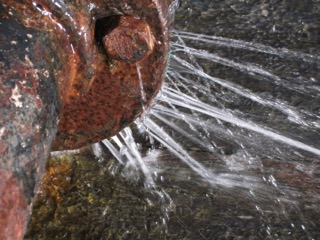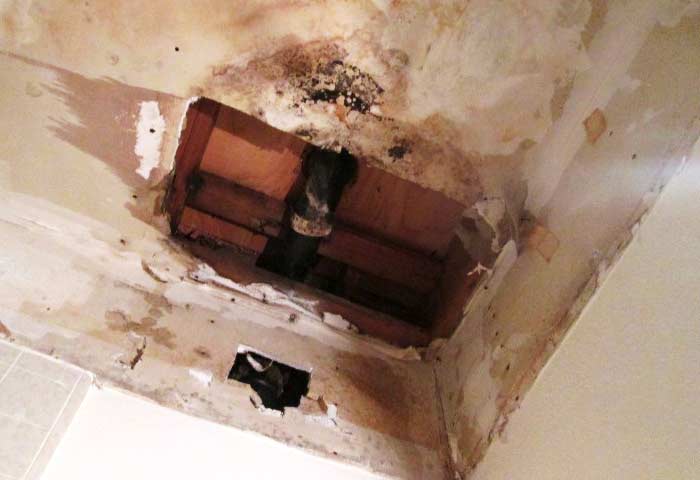Quick-Response Plumbing: Tips for Identifying as well as Fixing Ruptured Pipes
Quick-Response Plumbing: Tips for Identifying as well as Fixing Ruptured Pipes
Blog Article
What're your opinions on What to Know Before Installing a Dishwasher?

A ruptured pipe is a significant emergency; you can just stand as you view water you pay a lot to reunite with the earth. In even worse cases, you notice a swimming pool on your kitchen area floor, which is a wonderful trip threat, particularly if you have youngsters around. If the pipe that ruptured remained in your walls, trouble: you may require to repaint that whole section.
Exactly how can a disaster like a ruptured pipeline be protected against and taken care of? Well, by listening to your professional emergency plumbings and complying with these rules.
Just how do I know when my pipelines have burst?
Changing water pressures
Pipes do not simply burst in a day. You may have observed that your kitchen faucet or shower doesn't run promptly when you transform the faucet. It might pause for a couple of seconds and afterwards blast you with even more force than normal.
In other circumstances, the water may appear normal in the beginning, then decrease in pressure after a couple of seconds.
Damp walls and also water spots
Prior to a pipe ruptureds, it will leakage, many times. If this relentless leaking goes undetected, the leak might finish into a vast laceration in your pipeline. One simple means to avoid this emergency is to keep an eye out for wet wall surfaces advertisement water spots. These water discolorations will lead you right to the leakage.
Puddles under pipes and sinks
When a pipeline ruptureds, the outflow develops a pool. It may show up that the pool is growing in dimension, and regardless of the number of times you wipe the puddle, in a few mins, there's another one waiting to be cleaned up. Often, you may not have the ability to trace the puddle to any type of noticeable pipes. This is an indication to call a specialist plumber.
Untraceable dripping noises
Pipeline ruptureds can happen in one of the most undesirable places, like within concrete, inside walls, or under sinks. When your house goes quiet, you may be able to listen to an aggravatingly persistent leaking sound. Also after you've inspected your shower head as well as cooking area faucet, the dripping may continue.
Precious viewers, the trickling may be coming from a pipe inside your wall surfaces. There isn't much you can do concerning that, other than tell an expert plumber.
Turn off the Water
When water ices up, it increases in volume by concerning 9 percent. And it expands with significant force: The pressure inside pipelines may go from 40 extra pounds per square inch to 40,000 psi! No pipe can hold that much stress, so it breaks open. The break might occur where the ice kinds, however regularly, it happens where water stress finds a weak point in the pipe. That may be inches or perhaps feet from the icy location. Discover the water shutoff valve and also shut off the water to stop more damage. You may additionally need to turn off the electricity also, relying on where the leaks happens and also just how big it is.
Polluted water
Many individuals presume a ruptured pipeline is a one-way outlet. Quite the contrary. As water drains of the hole or gash in your plumbing system, pollutants find their way in.
Your water may be polluted from the source, so if you can, inspect if your water tank has any type of issues. Nonetheless, if your alcohol consumption water is provided and also cleansed by the city government, you must call your plumber quickly if you see or scent anything funny in your water.
What do I do when I detect a ruptured pipe?
Your water meter will certainly continue to run also while your water wastes. To decrease your losses, discover the main controls and turn the supply off. The water mains are an above-ground framework beside your home.
How to Fix & Detect a Leaking Pipe
How Do I Know if a Pipe is Leaking?
Leak detection tests can help you determine if your pipe has a leak. Even if you don’t see an apparent leak, you should still conduct leak detection tests regularly to save water and money—and prevent major damage to your home.
Water meter. It can be helpful to figure out what your usual water meter usage numbers are and then monitor them regularly. To monitor your meter, first, turn off all water faucets in your home. Check the meter and write down the numbers. In a few hours, check the meter again. If the numbers have changed, you have a leak. Water gauge. Use a water gauge to test your water pressure. Your showerhead should produce a certain amount of water pressure based on its model and design. If the pressure is lower than it is supposed to be for that specific showerhead, your home likely has a leak. Puddles. Look inside your bathroom, laundry, and kitchen sink cabinets. Puddles around the cabinets or around toilets, tubs, showers, and washing machines indicate the presence of a leaking pipe. You may also notice loose tiles, peeling or flaking paint, or mold caused by water accumulation. Napkin test. Even if you don’t see any puddles, you may still have a leak. You can test for water leaks in the bathroom, laundry, and kitchen by wiping below-sink connections with a napkin, paper towel, or piece of toilet paper. If it becomes damp, you probably have a leaking pipe under the sink. Discolored walls. Walls that are discolored—usually with brown or yellow stains—or bulging might mean that they have been impacted by water damage caused by a leaking pipe. Smell. A leaky pipe will create sitting water, and over time, that water may develop a musty smell. If your home smells musty, but you can’t locate the source, it may be due to a leak. Steps for Fixing a Leaking Pipe
A leaky drain can be remedied by tightening the pipe base, replacing the drain seal, caulking the rim, and tightening the pipe nut. Similarly, a leaking toilet pipe can be treated by tightening the packing nut. You may also need to replace the valve. A leaky faucet may just need tightening or replacement of the washers. If that doesn’t work, consider replacing your faucet. If your pipe has a hole in it, you may want to use a pipe leak sealer or pipe leak tape. This quick fix for water pipe leaks can also temporarily fix a copper pipe leak. https://www.ahs.com/home-matters/quick-tips/how-to-tell-if-pipes-are-leaking/

I'm just very interested by How to Prepare for Your Dishwasher Installation and I hope you appreciated the entire post. Kindly take a moment to distribute this blog entry if you appreciated it. Thank you for your time invested reading it.
See Availability
Report this page